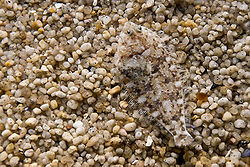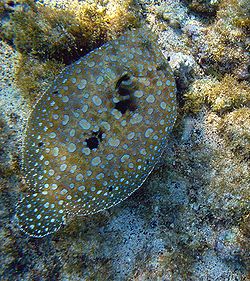Products
Mullet, one of the abundant, valuable schooling fishes of the family Mugilidae (order Perciformes). Mullets number fewer than 100 species and are found throughout tropical and temperate regions. They generally inhabit salt water or brackish water and frequent shallow, inshore areas, commonly grubbing about in the sand or mud for microscopic plants, small animals, and other food. They are silvery fishes 1–3 feet long, weighing 2-3 pounds, with large scales; relatively stocky, cigar-shaped bodies; forked tails; and two distinct dorsal fins, the first containing four stiff spines. Many have strong, gizzard-like stomachs and long intestines capable of handling a largely vegetarian diet. Mullet has a firm texture, and a moderate flavor. Mullet is amazing smoked. Our recipe this week is for Smoked Mullet. If you don’t own a smoker, we can smoke it for you. Just call the market and ask for Craig – he LOVES to break out our smoker!! Incidentially, if you don’t like it smoked, you can grill it, bake it, fry it, broil it – it is a very versatile fish. The wahoo is found worldwide in tropical and subtropical areas. In Hawaii it is known as the Ono (means “tasty” or “delicious”) and in the Caribbean and Central America it is known as the Peto. Their body is elongated and covered with small, barely visible scales. Their back is an iridescent blue and their sides are silvery with a pattern of vertical blue bars (these colors fade rapidly upon death). The Wahoo have a large mouth with razor sharp teeth and are a very aggressive fish. They can grow up to 8 feet in length and weigh up to 180 pounds. The Wahoo is a rapidly growing fish – one specimen that was tagged at 11 pounds grew to 33 pounds in one year. Wahoo can swim up to 50 mph , one of the fastest fish in the sea. Wahoo tend to be solitary or occur in groups of two or three fish, but when conditions are suitable can be found in schools as large as 100 or more. Their diet is made up of other fish and squid. The flesh of the wahoo is white and very delicate. Alaskan Halibut is the largest flat fish, averaging 24 to 30 pounds, but fish as large at 700 pounds have been reported. They are gray-black on the top side with an off-white underbelly and have very small scales invisible to the naked eye embedded in their skin. At birth they have an eye on each side of their head like a “normal” fish, but at about 6 months old one eye migrates to the other side making them look more like a flounder. At the same time the stationary-eyed side darkens to match the top side, while the other side remains white. This color scheme disguises halibut from above (blending with the ocean floor) and from below (belending into the light from the sky) and is known as countershading. Halibut will feed on almost any animal that they can fit into their mouths. Juvenile halibut feed on small crustaceans and other bottom dwelling organisms such as octopus, crab, salmon, hermit crabs, lamprey, sculpin, cod, pollock herring, flounder as well as other halibut. Halibut live at depths ranging from a few meters to hundreds of meters. Although they spend most of their time near the bottom, halibut may move up in the water column to feed. In most ecosystems, the halibut is near the top of the food chain, but common predators are the sea lion, the orca and the salmon shark. Halibut is often broiled, deep-fried or grille, while smoking is often more difficult because of its ultra low-fat content. When eaten fresh, the meat has a clean taste and requires little seasoning. Halibut is noted for its dense and firm texture. Alaskan halibut is also certified as sustainable by the Marine Stewardship Council. Scallops are marine bivalve molluscs from the family Pectinindae found in all of the world’s oceans. Many scallops are utilized as food sources and some of the brightly colored, fan-shaped shells are valued by shell collectors. The name “scallop” is derived from the Old French word escalope, with means “shell”. Like oysters, scallops have a central adductor muscle, and therefore the inside of their shells have a characteristic central scar, marking the point of attachment for this muscle. The adductor muscle of scallops is larger and more developed than that of oysters because they are active swimmers; in fact scallops are the only bivalve that migrates. Reflector eyes are an alternative to a lens where the inside of the eye is lined with mirrors which reflect the image to focus at a central point. The nature of these eyes means that if one where to peer into the pupil of an eye, one would see the same image that the organism would see, reflected back out. The scallop Pecten has up to 100 millimeter-scale reflector eyes fringing the edge of its shell. It detects moving objects as they pass successive lenses. So what do I do when I get these Scallops?? In the same motion lift the flat shell upwards to reveal the contents (unfortunately you will probably see the muscle and other organs pulsating at this point). With one motion cut behind the testis and roe right around to the adductor muscle to separate the edible parts from the eyes, gills and mantle. Cut the bottom of the adductor away from the rounded half of the shell and you should be left with good edible parts. Discard everything else except the shell. There will be a small dark tube (gut) around the rear edge of the adductor muscle which needs to be scraped away, as do any remaining bits of mantle or eye that are left. Then the scallop needs rinsing off in cold water and cooking as soon as possible. Remember that the shell can be used as well, so don’t discard it with everything else. The rounded half when cleaned out makes a perfect cooking and serving dish for many recipes. They also make good candle trays, side dishes, garden ornaments… The list goes on. How do I cook them? Bake: Preheat oven to 375 degrees. Line the bottom of a shallow baking pan with aluminum foil and grease the foil. Lay the scallops in the prepared pan. Place the pan containing the scallops in the oven. Bake for 12 to 15 minutes until white in color and slightly firm. Broil: Place your scallops in a well greased pan about 3 to 4 inches from heat source. Brush the scallops liberally with melted butter. Cook until white in color and slightly firm. Sauté: Dip cleaned scallops in milk and lightly dust with flour. Melt enough butter in a skillet to cover the bottom. When the butter is hot, but not burned, place the scallops in the skillet. Cook until lightly browned on each side, turning once. Scallops are also excellent in a stir-fry or grilled on a skewer. Thawing: Frozen scallops should be thawed under refrigeration at or below 38°. Running cold water over the scallops can help thaw them quicker. Be sure to have the scallops in a sealed bag when doing this so you don’t rinse out their flavorful juices. Our White Sturgeon is farm raised in Napa Valley, California and produces some of the most delicious caviar available today. In the wild, White Sturgeon can grow up to 20 feet long and up to 1500 pounds. They are found in coastal waters from Alaska to Baja, California and on occasion in rivers when they swim inland to spawn. They are grey or brownish in color with a pale underbelly. In addition to its bony armor and cartilage skeleton, it has a notochord, (a primitive precusor to the backbone) which is found in only one other animal – the lamprey. The White Sturgeon does not have any teeth and has poor eyesight, so it uses it sense of smell to scrutinize its murky underwater environment. It feeds mostly on smaller fish, small crustaceans, mollusks and insects by using its tubular, stretchy vacuum sweeper type mouth to suck food from the sea bottom. In North America, the only place wreckfish are caught is off the coast of South Carolina at a place called the “Carolina Bump”. This is the only documented spawning site in the Atlantic Ocean. When you purchase this fish, you are supporting a domestic heritage fishery. However, wreckfish is a notoriously difficult fish to catch. Fishing equipment consists of single weighted lines with no more than a handful of circle hooks baited with squid. But because of the fishing method there is no destruction of bottom habitat and no discarded by-catch thereby protecting the environment. Due to these fishing methods, the Carolina Wreckfish is harvested in accordance with the National Marine Fisheries Service sustainable fishery regulations. You can learn more about these practices at www.fishwatch.noaa.gov. The Carolina Wreckfish is a cousin to both the seabass and the grouper. They are a bass-like species that are bluish Grey above and paler below with a silvery sheen. Their fins are blackish brown. Juveniles have black blotches on their head and body. Their name comes from juveniles tending to hang out in “shipwrecks”. Wreckfish have a big mouth with a big head and a rough ridge across the upper part of the gill cover. The maximum size for the fish is 6.5 feet in length and 220 pounds. It has a firm white flakey flesh and is ideal for roasting and pan searing. It is a great alternative to Chilean Sea Bass. It is seasonally available. The fishery is closed during spawning season (January 15 – April 15). Click here The flounder is an ocean-dwelling flatfish species that is found in coastal lagoons and estuaries of the northern atlantic and pacific oceans. When a flounder hatches, one eye is located on each side of its brain. However, as a adult, both eyes are situated on one side of its head. One eye migrates to the other side of the body as a process of metamorphosis as it grows from larval to juvenile stage. In addition, a flounder changes its habits and camouflages itself by lying on the bottom of the ocean floor as protection against predators and as a result, the eyes are then on the side which faces up. The side to which the eyes migrate is dependent on the species type. Flounder are typically about 5 to 15 inches long and usually are half as wide as they are long. They have been found as large as 24 inches long. Flounder are a rather odd fish. They have an odd shape, they have an odd life cycle, and it is even odd the way in which you dress a flounder. The only thing not odd about them is the way they taste. They have mild white flesh that many people prefer to most any other fish.
Mullet
admin : March 13, 2012 5:54 pm : Mullet 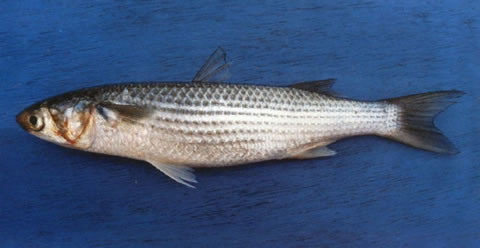
Wahoo
admin : March 13, 2012 5:52 pm : Photo Gallery 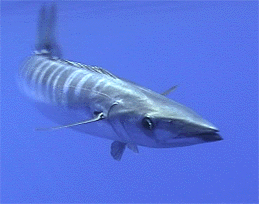
Alaskan Halibut
admin : March 13, 2012 5:50 pm : Photo Gallery 
Live Scallops
admin : March 13, 2012 5:49 pm : Photo Gallery 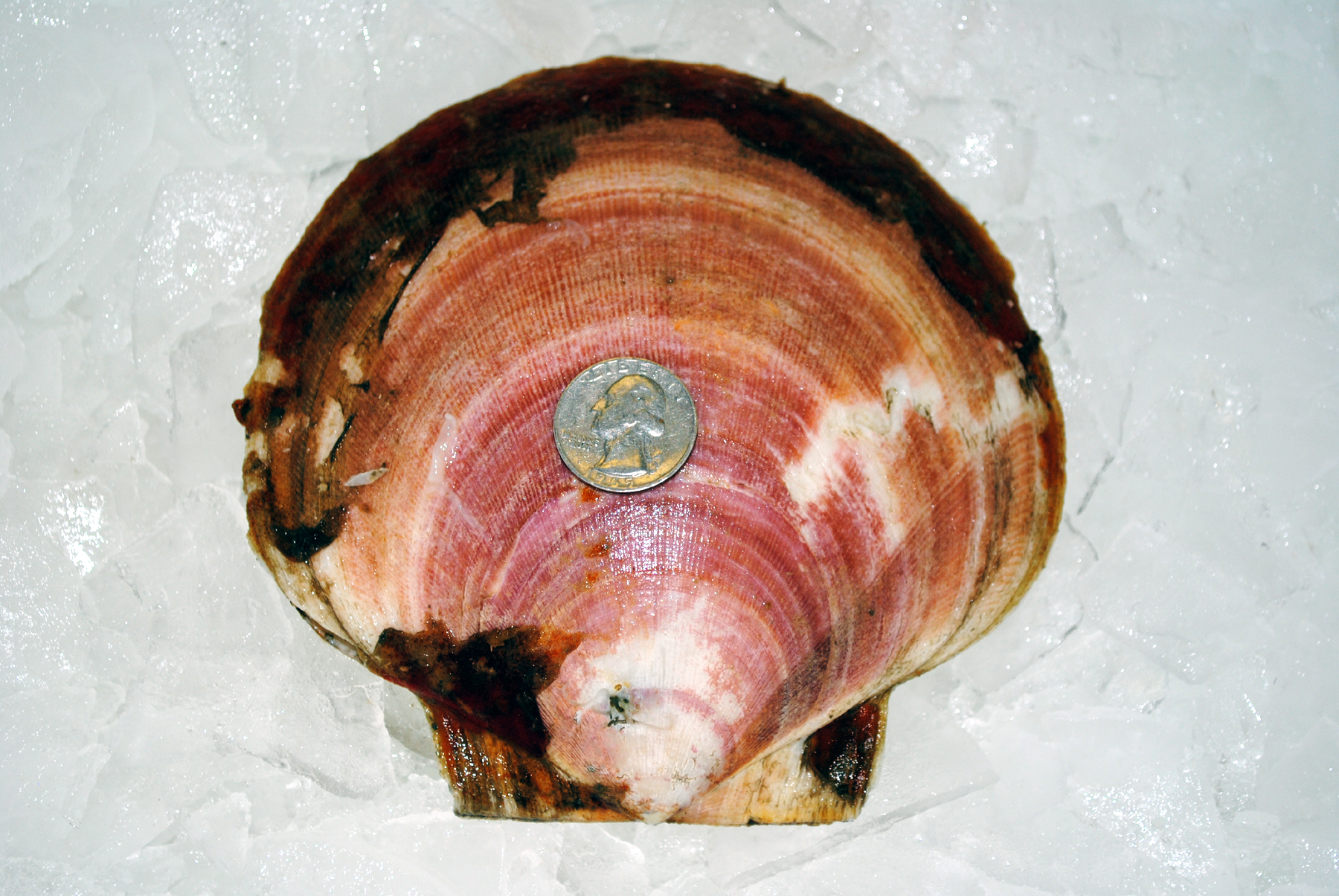
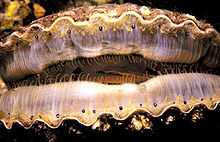
Scallops have between 50 and 200 simple eyes strung around the edges of their mantles like a string of beads. They are reflector eyes with a retina that is more complex than those of other bivalves. Their eyes contain two retina types: one responding to light and the other to abrupt darkness, such as the shadow of a nearby predator. They cannot detect shapes, but can detect changing patterns of light and motion.
Opening a scallop requires a short, sharp and stout knife (ie oyster knife) and a live scallop. To open a scallop and clean it at the same time, hold the scallop in the flat of your left hand with the rounded half of the shell downwards and the hinge facing away from yourself. On the right of the hinge as you now view it where the shell begins to bulge there will be a slight gap between the two shells. Place the point of the knife (blade pointing away from you) in this gap and push the blade upwards and in towards the center of the shell. Then keeping the blade pressed against the inside of the upper flat shell, cut through the adductor muscle where it joins the shell moving towards the hinge of the scallop. When the muscle is cut you will feel the two halves come apart.
White Sturgeon
admin : March 13, 2012 5:46 pm : Photo Gallery 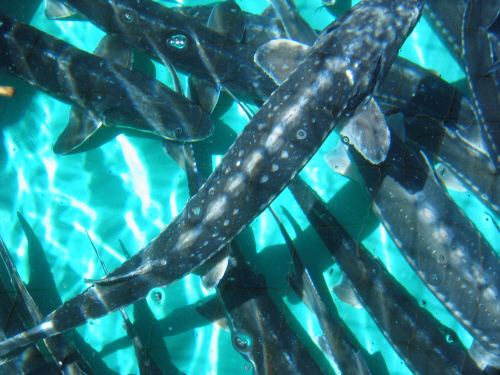
The reason that we choose farm raised White Sturgeon is because Sterling Caviar is a complete ecological and economically sustainable aquaculture environment that doesn’t use any antibiotics, pesticides, fertilizers or growth-hormones. For more information on the Sturgeon History from Sterling Caviar please click here
Carolina Wreckfish
admin : March 13, 2012 5:45 pm : Photo Gallery 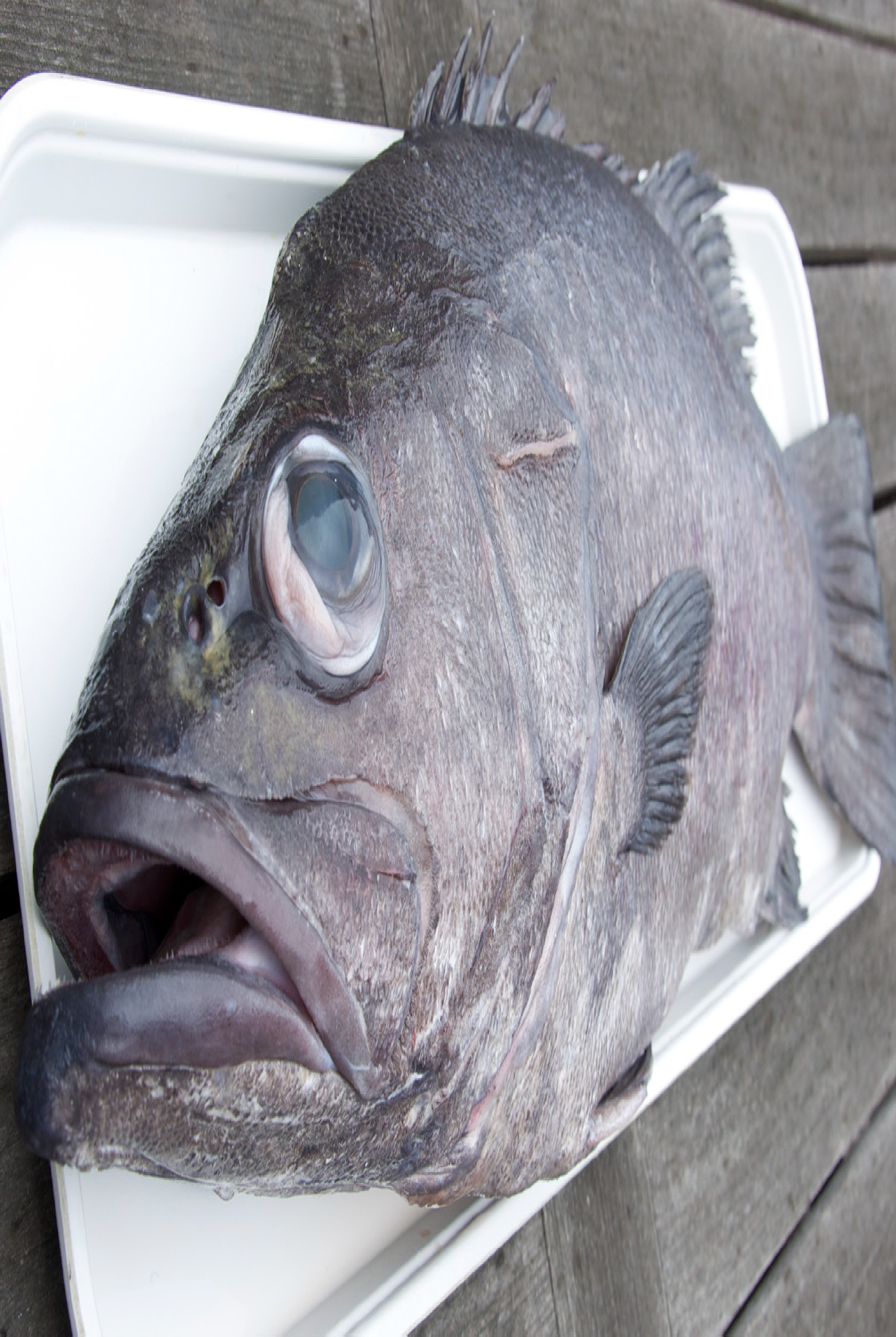
Flounder
admin : March 13, 2012 5:43 pm : Flounder 